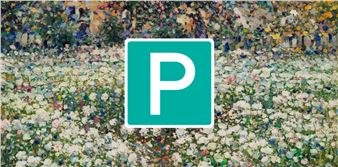Inga Meldere and Luá¨ze Neéƒberte: Sunpoles
Kim? Contemporary Art Centreãs autumn season exhibition programme opens with a special collaboration: a spatial installation by Inga Meldere and Luá¨ze Neéƒberte, encompassing newly created works by both artists, as well as works never previously exhibited in Latvia. The exhibition space includes several series of works: sculptures, installations, drawings and paintings which study and reflect regional, social and culture-historical details. These series of works establish a dialogue between the practices of two artists from different generations, which reflect the rebirth of narrative in visual art, an ethically grounded approach to matter and respect towards the heritage of the past.
When beginning to prepare the exhibition, Meldere and Neéƒberte researched the architectural heritage, which follows from the work of Latvian architect and ethnographer, founder of the Ethnographic Open-Air Museum of Latvia, Pauls KundziééÀ (1888ã1983). KundziééÀãs unique contribution consisted of studying and preserving for future generations important architectural elements, such as the so-called ãsun-shapedã (ãsauá¥otásã) columns in Latvian wooden architecture from the 18th century, which are noteworthy as historically significant formal exercises, and which furthermore open the way towards a search for parallels, comparisons and context with ãidea fieldsã on a register similar to those seen, for example, in modernist artist Constantin Brancusiãs (1876ã1957) Endless Column.
In her individual practice, Meldere is preoccupied with abstracted and poetic painterly investigations ã ãhand exercisesã ã based on what she has observed as part of her daily routine, read, or noticed on her smartphone. References to what has been experienced are interpreted visually: paraphrased and approximated in fragmentary oil-on-paper sketches of seemingly recognisable objects or creatures. Printed on canvas and articulated in spatial installations, these references conjure up a variety of surreal situations. Employing interdisciplinary, innovatory and speculative approaches borrowed from her education in painting conservation and contemporary art, Meldere delves into tracing transience, and into questions touching on social history, authenticity and microhistories.
Meanwhile, Neéƒberte, in her series of works included in the exhibition, takes up the conceptual thread related to forms of vernacular architecture by making sculptures. These are column-like vertical structures assembled from modular elements, their forms borrowed from the sketches KundziééÀ developed for the bandstand of the 1926 Song Festival, as well as from stylised replicas of the columns from the first state-protected cultural monument in Latvia ã the Community House of the Congregation of Moravian Brethren in Gaide. By organically integrating object, image-making and text, a series of metal sculptures made specially for this exhibition uncover Neéƒberteãs fascination with the techniques of collecting, quoting and collage. These formal experiments with objet trouvûˋ and the dissipation of authorship through creative appropriation are further transposed in the zine accompanying the exhibition, which brings together inspirational and research references in visual and textual form, as well as a specially created literary passage by poet Raimonds áÑiráñis.

Recommended for you
Kim? Contemporary Art Centreãs autumn season exhibition programme opens with a special collaboration: a spatial installation by Inga Meldere and Luá¨ze Neéƒberte, encompassing newly created works by both artists, as well as works never previously exhibited in Latvia. The exhibition space includes several series of works: sculptures, installations, drawings and paintings which study and reflect regional, social and culture-historical details. These series of works establish a dialogue between the practices of two artists from different generations, which reflect the rebirth of narrative in visual art, an ethically grounded approach to matter and respect towards the heritage of the past.
When beginning to prepare the exhibition, Meldere and Neéƒberte researched the architectural heritage, which follows from the work of Latvian architect and ethnographer, founder of the Ethnographic Open-Air Museum of Latvia, Pauls KundziééÀ (1888ã1983). KundziééÀãs unique contribution consisted of studying and preserving for future generations important architectural elements, such as the so-called ãsun-shapedã (ãsauá¥otásã) columns in Latvian wooden architecture from the 18th century, which are noteworthy as historically significant formal exercises, and which furthermore open the way towards a search for parallels, comparisons and context with ãidea fieldsã on a register similar to those seen, for example, in modernist artist Constantin Brancusiãs (1876ã1957) Endless Column.
In her individual practice, Meldere is preoccupied with abstracted and poetic painterly investigations ã ãhand exercisesã ã based on what she has observed as part of her daily routine, read, or noticed on her smartphone. References to what has been experienced are interpreted visually: paraphrased and approximated in fragmentary oil-on-paper sketches of seemingly recognisable objects or creatures. Printed on canvas and articulated in spatial installations, these references conjure up a variety of surreal situations. Employing interdisciplinary, innovatory and speculative approaches borrowed from her education in painting conservation and contemporary art, Meldere delves into tracing transience, and into questions touching on social history, authenticity and microhistories.
Meanwhile, Neéƒberte, in her series of works included in the exhibition, takes up the conceptual thread related to forms of vernacular architecture by making sculptures. These are column-like vertical structures assembled from modular elements, their forms borrowed from the sketches KundziééÀ developed for the bandstand of the 1926 Song Festival, as well as from stylised replicas of the columns from the first state-protected cultural monument in Latvia ã the Community House of the Congregation of Moravian Brethren in Gaide. By organically integrating object, image-making and text, a series of metal sculptures made specially for this exhibition uncover Neéƒberteãs fascination with the techniques of collecting, quoting and collage. These formal experiments with objet trouvûˋ and the dissipation of authorship through creative appropriation are further transposed in the zine accompanying the exhibition, which brings together inspirational and research references in visual and textual form, as well as a specially created literary passage by poet Raimonds áÑiráñis.












